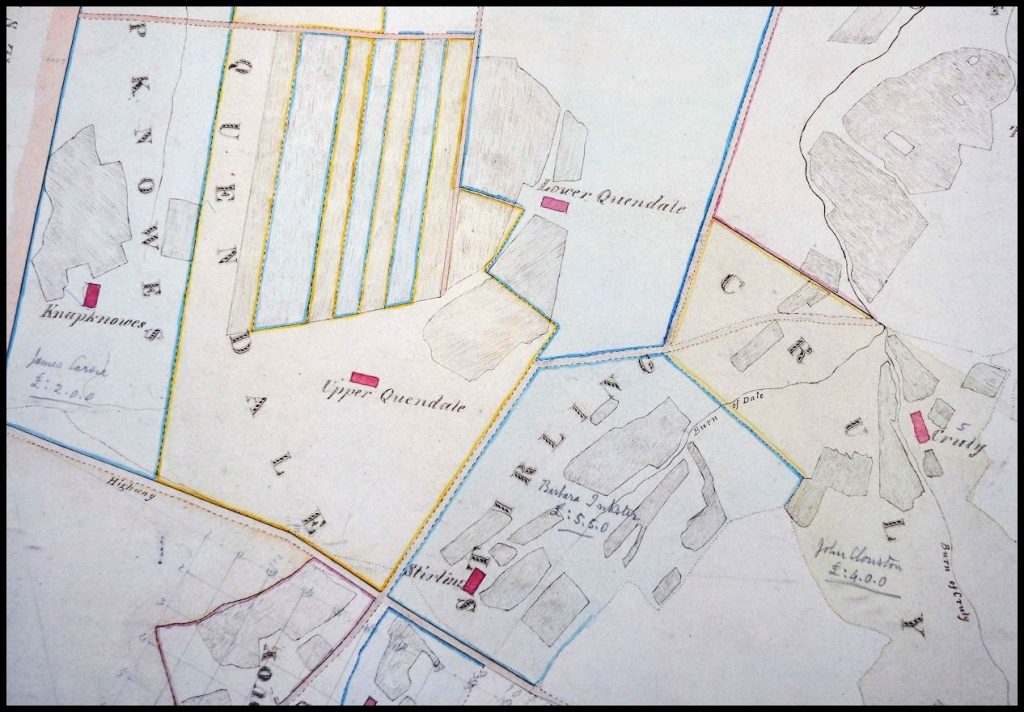As well as being tenant of Tofts, Magnus Murray paid an annual rent of £3 for Knapknowes in 1841. The old house at Quandale was situated beside the Westness dyke, which ran between the road below the school and the clifftop at the Sinians of Cutclaws.
In 1843 David Craigie was tenant of both Knapknowes and Cutclaws, paying £7 for both sites. David moved to Kirkwall in 1853. There is no evidence left of either dwelling.
In 1936 three mounds were excavated at Knapknowes by Walter Grant, his investigations revealing the fact they contained burials. The first covered a cist [small stone-built coffin-like box] containing cremated bone, ‘cramp’ [vitrified fuel ash slag, known as cramp in the context of Bronze Age Orcadian funerary practices], and six small pieces of flint. The second, crossed by a drystone dyke, covered two cists, one of them central, both containing cremated bone and cramp. The third mound covered an upright Cinerary Urn [an urn for holding a human’s ashes after cremation] in a stone setting and containing cremated bones and ‘cramp’. These three cairns were located close to the farmstead of Knapknowes, evidence of which was scarce for the footings and walls had been used to build the nearby dykes. One other mound on the site was also excavated by Grant, but it was in fact the remains of the corn-drying kiln associated with the farmstead.
